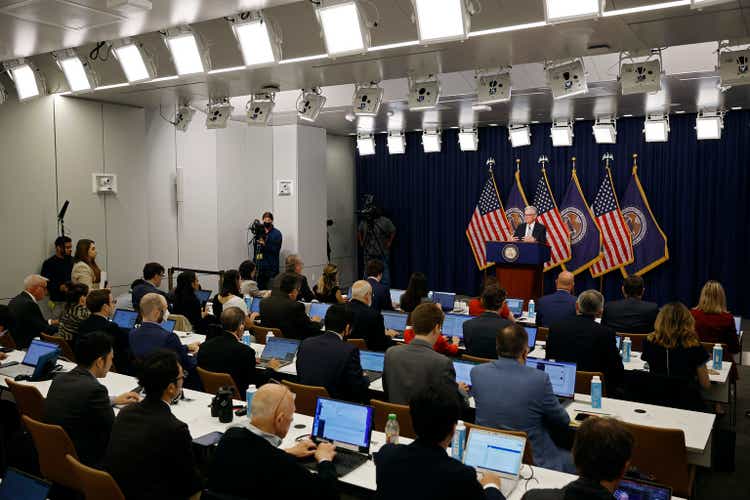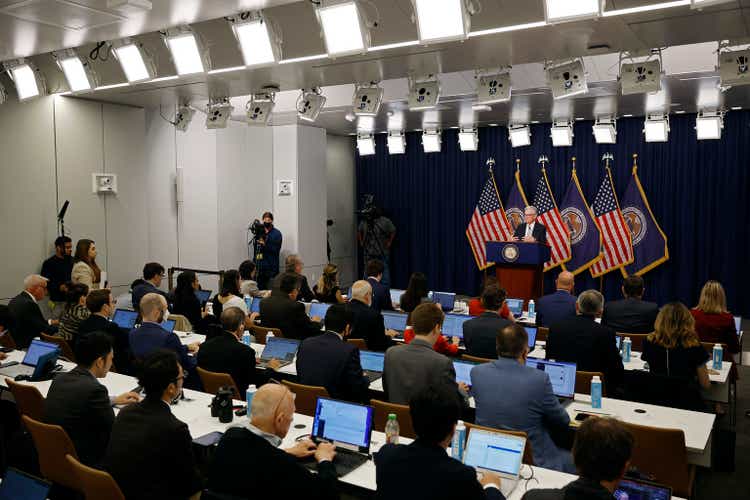
Chip Somodevilla/Getty Images News
For years, the Federal Reserve’s monetary policy actions were a mystery. The policymakers held meetings without letting markets know whether they had hiked or cut rates or kept policy unchanged. Fed watchers deduced the decisions from the movement of short-term interest rates.
Now the central bank, which was formed in 1913, has an account on Instagram and holds press conferences after each meeting. Times have changed.
Here’s a timeline hitting the highlights of how the Federal Open Market Committee’s communications policy has changed over the years:
- For more than 30 years after the FOMC’s current structure was created in 1935, policy actions were only communicated annually, appearing as an appendix in the FOMC’s annual report.
- Since 1979, the central bank has disclosed the individual economic projections of the Federal Open Market Committee’s members in the twice-a-year monetary policy report.
- February 1993: The Federal Open Markets Committee begins issuing minutes of its monetary policy meetings, roughly in its present form, generally about three days after the FOMC’s subsequent meeting.
- February 1994: The Federal Open Market Committee releases statements on its main policy tool, the overnight federal funds rate.
- February 1995: “Lightly edited” transcripts of the FOMC’s meetings are issued with a five-year lag.
- December 2004: The Fed reduces the lag in releasing the minutes of each FOMC meeting to three weeks after each meeting.
- November 2007: The Fed increases the FOMC’s Summary of Economic Projections (“SEP”) releases to four times a year from twice a year. It’s included as an addendum to the FOMC meeting minutes.
- April 2011: Chairman Ben Bernanke holds the first post-monetary policy decision press conference, which are held four times a year and broadcast live on the Fed’s website. At that same meeting, the Fed started issuing the SEP at the same time as the post-meeting statement.
- January 2012: The FOMC participants’ assumptions about the appropriate level of the fed funds rate at year-ends and in the longer run are added to the SEP. Thus, the dot plot is born. That change coincided with the FOMC’s first annual release of its Statement of Longer-Run Goals and Monetary Policy Strategy.
- March 2012: The Federal Reserve launched its Twitter channel.
- January 2019: Fed Chair Jerome Powell increased the post-meeting press conferences to after every meeting, or eight times a year.
- October 2023: Fed joins Threads and Instagram, both part of Meta (META).








